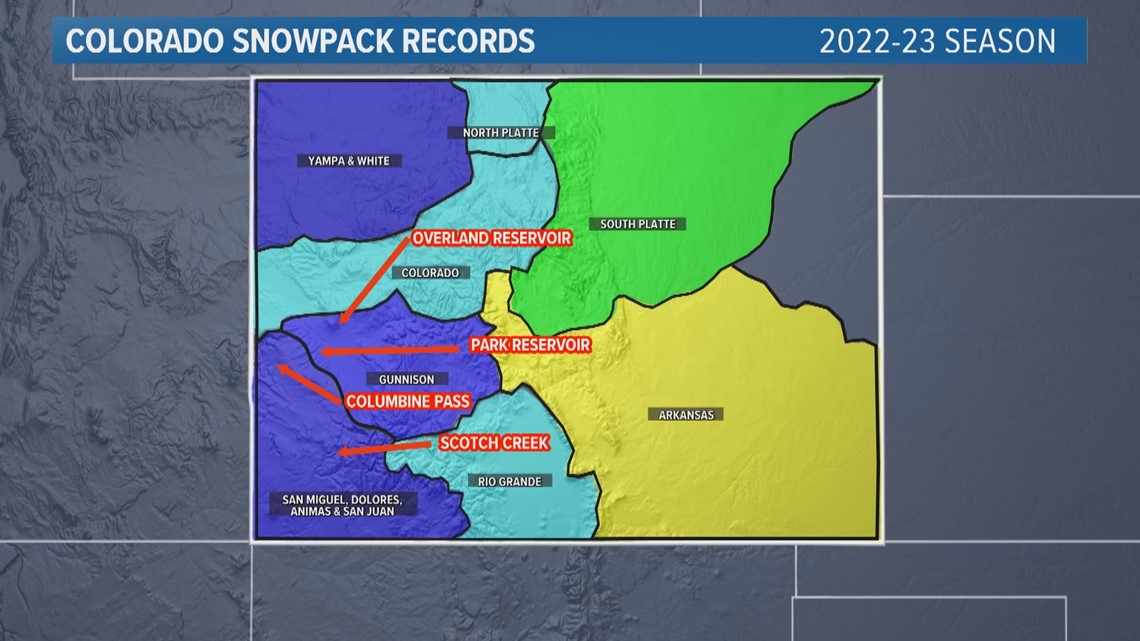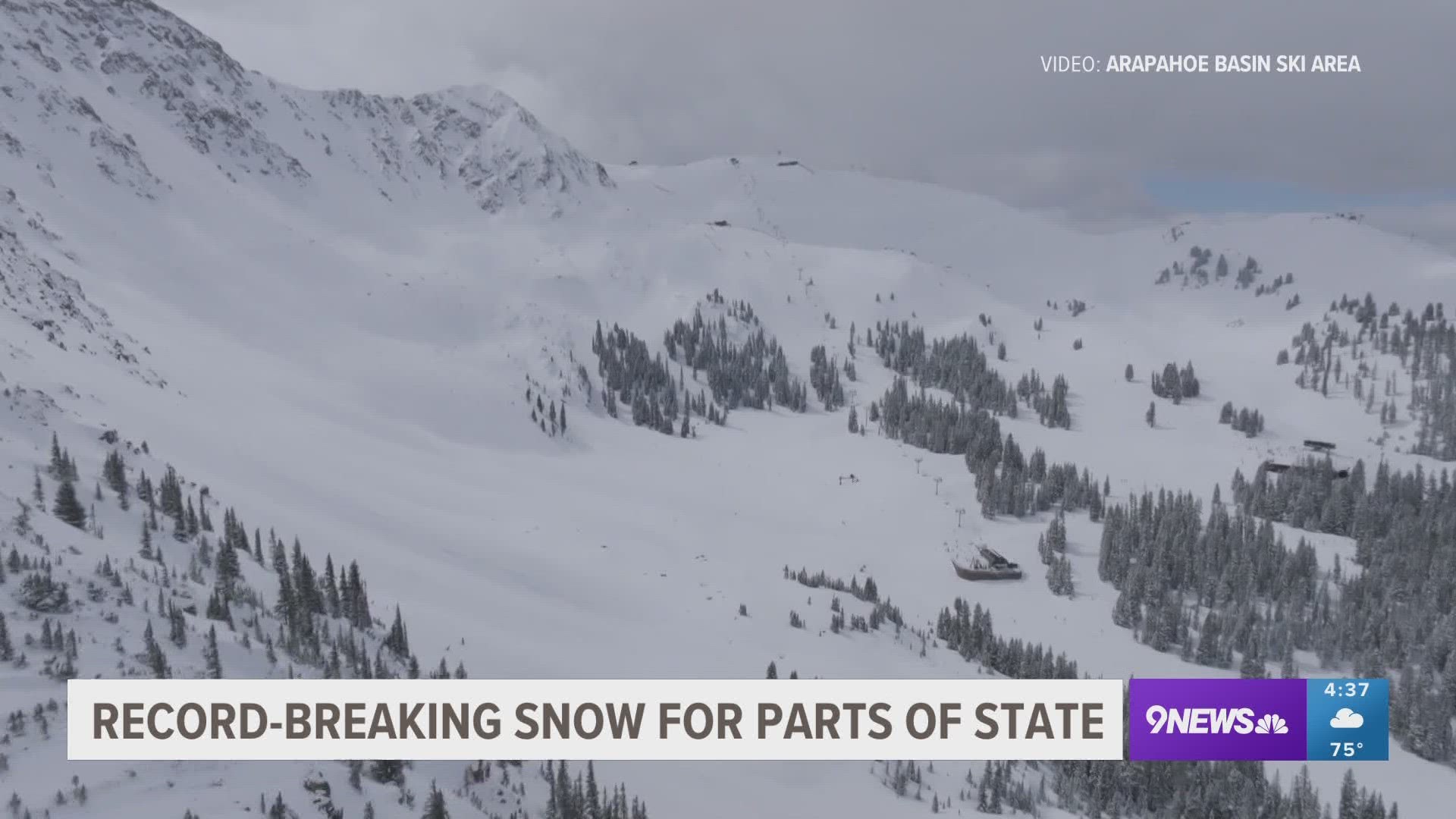COLORADO, USA — There are 115 mountain weather stations called SNOTELs spread out across the state. Data from those shows that overall, this was Colorado’s sixth-biggest snow season in the 37-year record. But snowpack records were broken in some places at some times.
The state is broken up into eight snowpack regions.
The San Juan region, which includes the headwaters of the San Miguel, Dolores, San Juan, and Animas rivers, hit record levels on March 23 with 29.9" of snow-water equivalent (SWE).
Then 14 consecutive daily records were broken through April 5 -- but came up just short of the record peak of 32.0" set back in 1993.
The Yampa region, which includes the headwaters of the Yampa, White, and Little Snake rivers, also broke eight daily snowpack records from April 2 through April 9. The peak in that region of 30.1" of SWE this year was fourth-highest, and the records in that basin go back to 1986.
The record peak snowpack for the Yampa region was 34.8" of SWE set in 2011.


The other basins in the western half of the state also ranked high. The North Platte region, which includes part of the North Platte headwaters and the Laramie River headwaters, ranked seventh-highest since 1987, with a peak SWE of 29.3", but that is really saying something because that area is by far the snowiest part of Colorado, with an average SWE of 24.6".
The Arkansas headwaters ranked 27th with a peak SWE of 10.4", which is the sixth-lowest snow total in that region’s history. That average snowpack there is 12.1 inches.
The South Platte headwaters also ranked low at 25th-highest with a peak SWE of 15.2", but you could say it's not as concerning there because while that's below the historic average of 16.9", it's above the 30-year average of 15.6".
A few individual stations broke snowpack records on the Western Slope.
In Montrose County, the Columbine Pass SNOTEL station on Spruce Mountain destroyed a snowpack record, peaking at 40.6" of SWE. That's 156% above the 30-year median peak. The runoff there feeds into the San Miguel River.
Along the Dolores River not far from the town of Rico, the Scotch Creek SNOTEL station broke a record, peaking at 22.6" of SWE, which is 88% above the 30-year median.


And two SNOTEL stations on the Grand Mesa had record-breaking snowpack in Delta County: The Overland Reservoir SNOTEL peaked at 24.0" of SWE, which is 94% above average, and the Park Reservoir station peaked at an incredible 50.0" of SWE, which is 82% above the 30-year median peak level there.
The runoff on that part of the Grand Mesa feeds into the Gunnison River.
While statewide snowpack has already peaked, it is still possible for some smaller regions to peak later in the season – especially the South Platte headwaters, which typically peaks on April 25.
SUGGESTED VIDEOS: Colorado Climate

